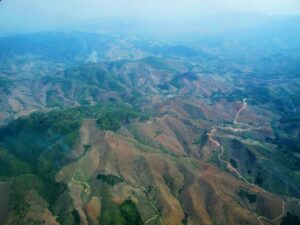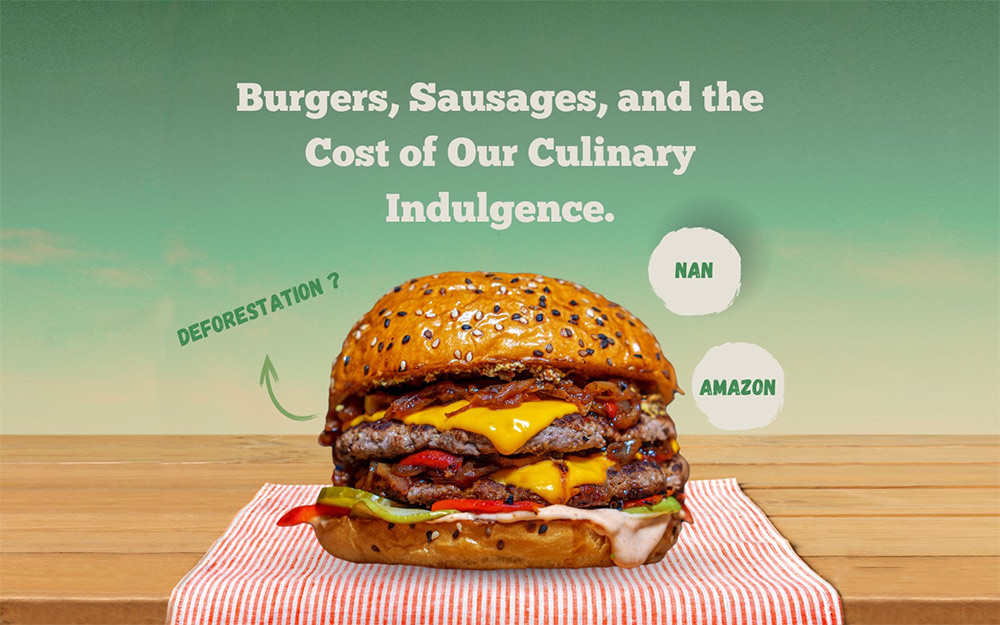It sounds hyperbolic, doesn’t it? How can a mere act of enjoying a sausage or biting into a juicy hamburger have repercussions on our world’s lush forests? Welcome to the Butterfly Effect in real life.

Thailand’s Nan Forest: From Canopy to Cornfields
Dive into Thailand’s history, and you’ll find that about two decades ago, the country was neck-deep in reforestation efforts. Nan province was at the heart of these endeavors. Characterized by its mountainous terrains and thick forests, the region played a crucial role in supporting the Nan River ecosystem. Once flourishing with an impressive 90% forest cover, it now laments a significant dip to just 60%. The culprit? Expansive cornfields, which cater to a rapidly growing animal feed industry. This corn eventually becomes fodder for pigs, chickens, and cows. In essence, the meat we consume today can be traced back to these vanishing forests. Each sausage, steak, or chicken wing consumed indirectly supports the demand that drives the transformation of these lush landscapes into agricultural expanses.
Amazon Rainforest: The Global Meat Connection
Turning our gaze to South America, the Amazon rainforest—a realm often dubbed the lungs of our planet—is in distress. Studies, including reports from organizations like Greenpeace, have drawn a clear link between American hamburger consumption and Amazonian deforestation. The narrative is eerily similar to that of Nan: a burgeoning demand for crops such as corn and soybeans, vital for animal feed, which directly fuels the global meat industry. As the world’s appetite for meat escalates, with countries like the U.S. at the forefront, the Amazon bears the brunt of this consumption pattern.

The Bigger Picture
The relationship between meat consumption and deforestation is an intricate one. Take, for instance, the “King Corn” documentary, which reveals how the U.S. government’s subsidies favor corn cultivation, inadvertently promoting corn-fed over grass-fed meat. The health ramifications of this shift are another concern altogether. Yet, the primary takeaway remains the undeniable impact on forests, be it Nan or the Amazon.
Every choice we make casts ripples, some more profound than others. It’s a realization that our meals today, seemingly innocuous, are determining the fate of our world’s green havens. It’s not just about the forests—it’s about the biodiversity they support, the water they purify, and the air they clean. So, the next time you’re tempted by a sausage or burger, it might be worth reflecting upon the distant forests that bear the cost of our culinary indulgences. Through informed decisions, we hold the power to change the narrative and help preserve these irreplaceable ecosystems.
